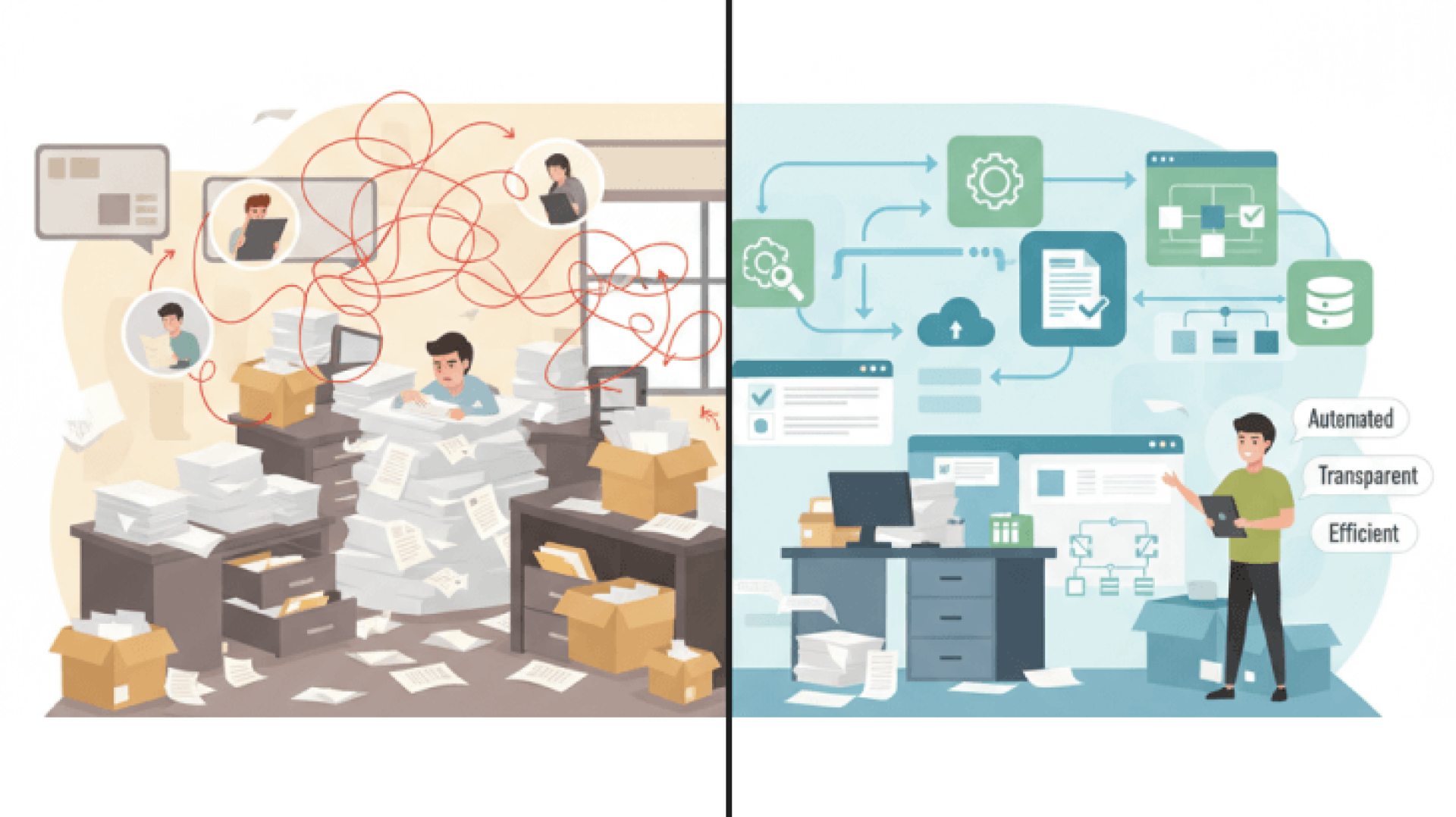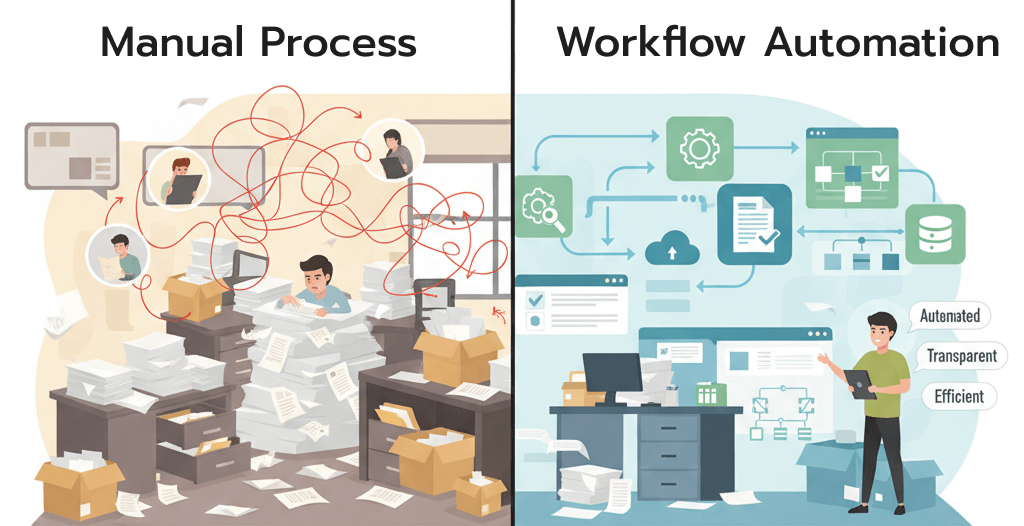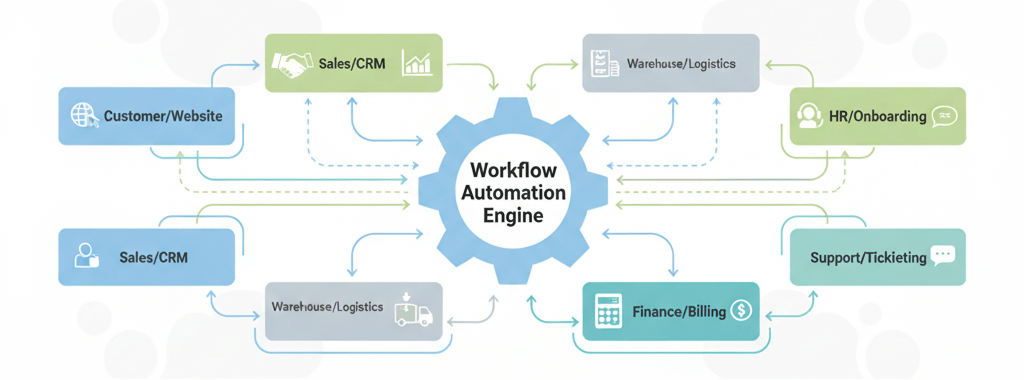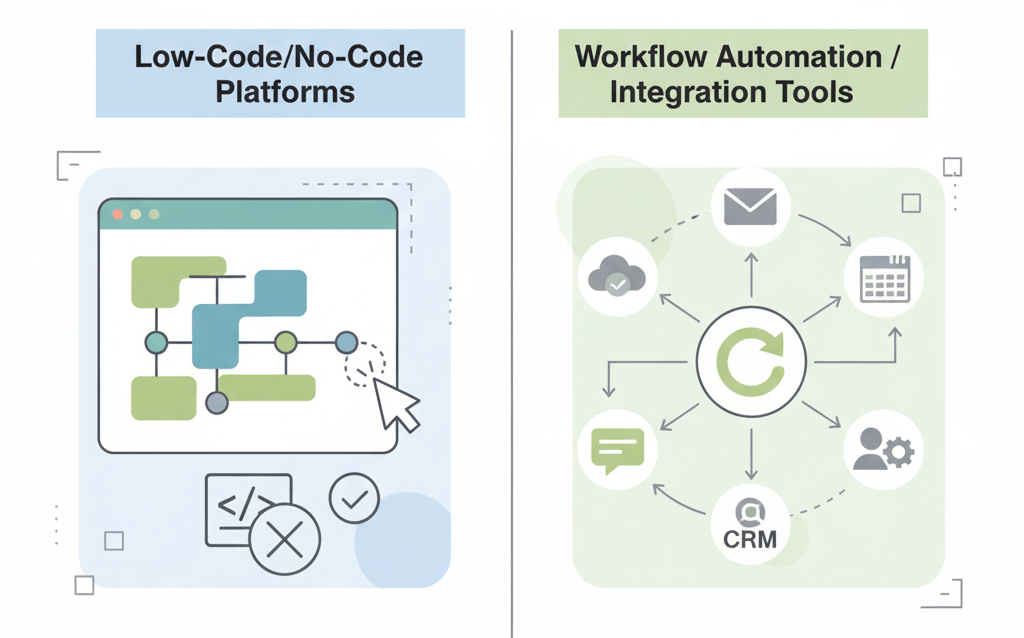Workflow Automation: An Easy-to-Understand Guide for Modern Businesses

Workflow Automation: An Easy-to-Understand Guide for Modern Businesses
In today's business world, where everything needs to be fast and accurate, think about those repetitive tasks you have to do every single day. Things like keying data from documents into the system, walking paperwork around for approvals, or time-consuming account reconciliation. While these tasks are necessary, they end up eating away at your employees' valuable time.
But wouldn't it be great if there was a tool that could make these jobs simple and get them done automatically? That's exactly what Workflow Automation is all about.

Starting with the Basics: What is a Workflow?
Before we jump into Automation, let's first get a solid understanding of the word Workflow. A workflow is essentially a sequence of steps or tasks that need to be completed to achieve a specific goal.
Think about a simple, everyday process, like ordering a cup of coffee:
- Walk to the counter
- State your order (what you want)
- The barista takes the order
- Make the payment
- The barista makes the coffee
- Receive your coffee

So, What is Workflow Automation?
Now that we understand what a Workflow is, Workflow Automation simply means bringing in tools or a system to make these work processes happen automatically, so you don't have to manually intervene in every single step anymore.
For example, taking our coffee ordering workflowinstead of walking up to the counter yourself, you just place the order through a mobile app. The system then handles everything automatically: from receiving the order, sending the command to the barista at the counter, and notifying you when the coffee is ready. All of this happens automatically and much faster than doing it manually.
The Benefits You Get from Workflow Automation
Implementing Workflow Automation doesn't just make work faster; it actually elevates your organization's performance across the board. In summary, here are the main benefits you can expect from Workflow Automation:

-
Save Time and Reduce Costs
Automating time-consuming and manual tasks frees up your employees' time so they can focus on work that requires creative thinking and generates higher value for the organization.
-
Reduce Human Error
When a system operates precisely based on pre-defined rules, the mistakes that usually happen due to fatigue or carelessness are significantly minimized.
-
Increase Transparency and Auditability
Every step of your workflow is systematically recorded in the system. This allows you to check the status and progress of work in real-time, which makes overall task management much simpler.
-
Boost Operational Efficiency
Making your workflow smooth and automatic helps eliminate bottlenecks in the process. As a result, the overall work gets completed faster and with greater efficiency.
Real-World Examples of Workflow Automation in Organizations
To make things even clearer, let's look at some examples of how Workflow Automation is being used in real-life situations that many organizations face today:

-
Customer Data Management
When a new customer signs up on your website, the system automatically pulls their information, creates an account in your CRM system, and sends the customer a welcome email.
-
Order Management
Once a customer pays for their product, the system automatically sends the order to the warehouse for fulfillment and simultaneously notifies the Accounting department to issue the invoice.
-
Email Triage
The system automatically reads incoming emails and sorts them by category. If an email is from a customer reporting an issue, the system instantly creates a support ticket and assigns it to the relevant staff member.
-
New Employee Onboarding
When a new employee is hired, the system automatically sends an email notification to HR to prepare documentation, as well as sending a welcome email to the new employee with all the necessary information.
-
Marketing Data Updates
You can set up the system to automatically pull data on website traffic or sales figures from various channels and compile that information into a daily report for the marketing team.
Tools for Building Workflow Automation
There are tons of tools out there for creating Workflow Automation, and each type has its own distinct features and strengths.

-
Low-Code/No-Code Platforms
These tools are designed to let users create applications and workflows easily without writing complex code. They are perfect for organizations that need flexibility and systems that can be modified frequently. For example, Joget is a Low-Code platform that helps businesses systematically build and manage complex workflows.
-
Workflow Automation / Integration Tools
This type of tool focuses on connecting different systems together, allowing the workflows you build to work seamlessly with the applications you already use every day. For example, n8n can connect to hundreds of applications to automatically send data from one place to another.
Conclusion
Workflow Automation isn't just a technology; it's the core of how work gets done in the digital age, helping businesses grow faster and more efficiently. By bringing in automated systems to manage repetitive tasks, you unlock your employees' potential and allow your organization to fully focus on innovation and creativity.
If you're looking for a way to make your business run smarter and quicker, starting to research and apply Workflow Automation is one crucial step you definitely shouldn't overlook.


